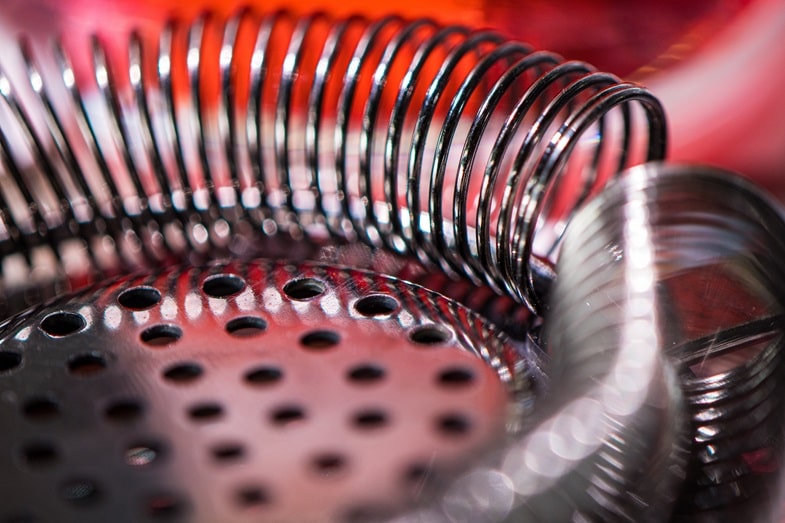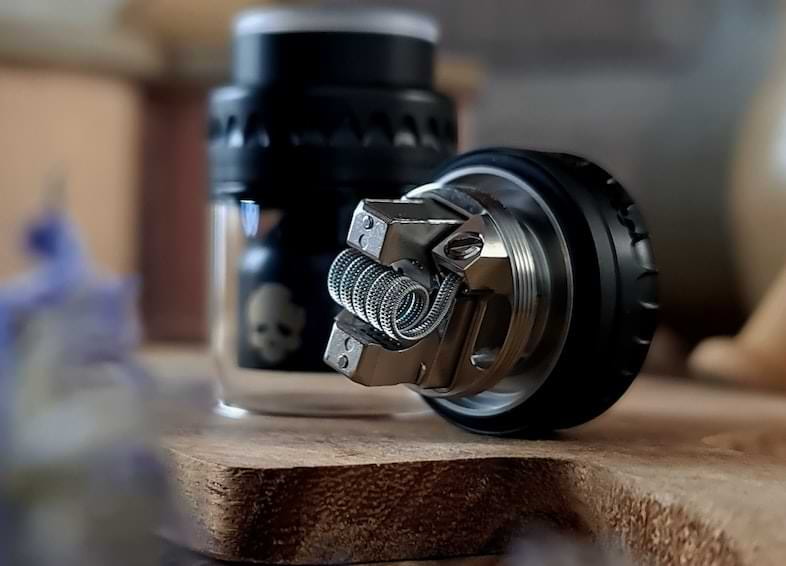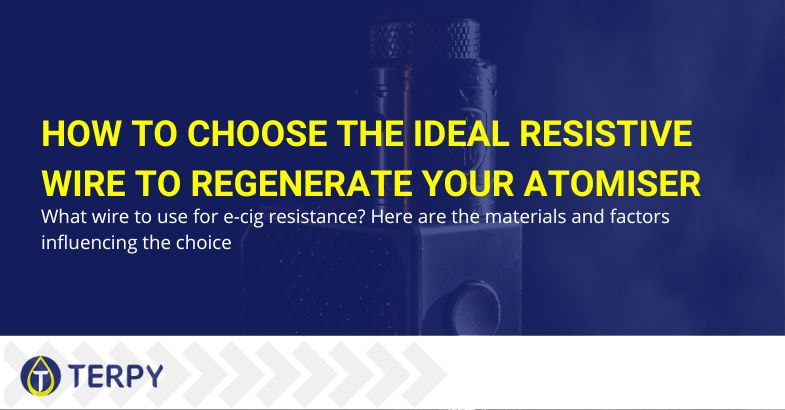Modified on: 27/05/2024
What wire to use for e-cig resistance? Here are the materials and factors influencing the choice
Regenerating the atomiser of an electronic cigarette is a procedure that a vaper usually starts to take care of once he has become familiar with vaping. However, performing this task can be very difficult initially, especially if you are not lucky enough to have a friend or acquaintance to mentor you.
In this article, we will discuss the importance of resistive wire and determine the main factors to consider when choosing it.


What is the role of resistive wire in electronic cigarettes?
If you are a vaping neophyte, you likely started using an electronic cigarette with a non-rebuildable atomiser. Consequently, it is normal if you have not paid much attention to the resistance so far (you have never had to replace it). However, as time passes, almost all vapers develop curiosity and seek an increasingly customised and advanced vaping experience.
Switching to a rebuildable atomiser is one of the first things you can do to perfect your vaping, but before you find out what characteristics to consider when choosing the resistive wire that will make up your coils, you must know what it is for.
As you should already know, the resistance is that part of the atomiser into which the cotton soaked in vaping liquids is inserted. When the atomiser is activated, it starts to receive electricity from the battery and heat up, thus evaporating the liquid and turning it into vapour. The role of the resistive wire with which the resistance is assembled, therefore, is to conduct energy and transform it into heat.
Now, however, let’s look at the materials used to produce resistive wires.
Read also: How long should DIY electronic cigarette liquids rest?
What materials are used for coils
Resistive wires for coils can be made of various metal alloys, each of which has specific characteristics. Various aspects, such as the type of e-cigarette liquid, the type of device, the kind of shot, etc., influence one material’s choice over another.
Among the most popular alloys are certainly Kanthal, Steel and Nichrome. Resistive wires of this type are used at various wattages, especially in mechanical devices, and are suitable for both cheek and lung shots. On the other hand, titanium, Nickel and Ni-Fe wires are mainly used for cheek shots and exclusively in temperature-controlled electronic cigarettes.
But why does the metal material made of a coil make it better suited to a specific wattage and a particular type of e-cig and vape? Well, because each alloy has a different reactivity and resistivity. Just as a diesel engine has to be fuelled with diesel, each e-cigarette needs a resistance adapted to the technical characteristics and aspects mentioned at the beginning of this paragraph.
But the material is not the only factor to be taken into account; there are, in fact, other characteristics that affect the vaping experience.


What factors must be taken into account when choosing resistive wire
A wire’s resistivity depends not only on the material but also on its thickness and length. The thicker the resistive wire, the longer it will take to heat up due to the lower resistance. In addition, a long wire with many coils makes contact with a larger surface area of cotton and thus generates more vapour.
Of course, for a wire to heat up the desired type of shot and the characteristics of the tobacco, creamy or fruity liquids in the tank, it is essential to choose the correct diameter and assemble the coil correctly. Generally, to select the most suitable wire for the e-cig and liquid used, one relies on the manufacturer’s instructions and then gradually explores new solutions. How? Increasing or decreasing the cross-section and the number of coils until the right set-up is found.
Deviating from the optimum values or using unsuitable materials may negatively impact the aromatic performance and affect components such as the battery and atomiser.
Read also: How to choose an excellent electronic cigarette (if you have just started vaping)
In conclusion
The resistive wire is one of those components that can customise vaping as the resistance affects both the amount of vapour produced and the release of e-cigarette aromas. Of course, for optimum aromatic performance, it is essential to use the correct wire and a quality liquid such as those available at Terpy.
In our shop, you will find a wide range of ready-to-use liquids and craft mixing products such as liquid nicotine, vape flavourings and e-liquid bases.










